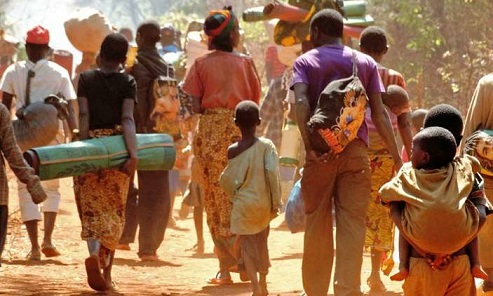
Over 300,000 Burundians have fled to ‘overstretched’ neighbouring countries
The number of people fleeing violence, threats, extrajudicial killings, abduction, torture and persecution in Burundi has passed the 300,000 mark, just 18 months after political conflict erupted in the East African country.
Burundi descended into chaos in April last year following the declaration by President Pierre Nkurunziza that he would bid for a controversial third term in office, one that he went on to win in the disputed July poll.
Since the violence began, Burundians have been fleeing to neighbouring countries in search for safety.
The UNHCR is now warning that this continued influx of the refugees into the neighbouring countries is stretching the countries resources even as conditions remain dire for many of the refugees, most of whom are women and children.
The refugee agency is warning that the expected arrivals of refugees in the neighbouring countries will continue to rise, and it fears that Tanzania, Rwanda, Uganda and the Democratic Republic of the Congo will struggle to continue providing adequate shelter, protection and life-saving services.
Tanzania currently hosts 163,084 Burundian refugees, the largest number in the region. In mid-September it was receiving new arrivals at a rate of 324 per day. More than 78% of the new arrivals are women and children.
Rwanda is home to more than 81,000 Burundian refugees, over 50,000 of whom live in Mahama camp in the east, with some 30,000 in Kigali and other urban areas.
Around 70% of the refugees are living in emergency shelters, which are starting to deteriorate.
At the end of August, Uganda was hosting 41,938 refugees from Burundi, 13,298 of whom have arrived this year. A steady influx of between 1,000 and 3,000 have been arriving each month and most are being hosted in Nakivale settlement, with smaller numbers in Kampala, Kyaka and Oruchinga.
The Democratic Republic of Congo has seen a significant increase in the number of new arrivals from Burundi: 3,925 refugees were registered between July and mid-September, mostly women and children. This compares to 1,773 from April-June.
More than 1,700 Burundian refugees and asylum seekers have arrived in Zambia since April last year, including 715 between January and August this year. Most of the asylum-seekers are in Lusaka awaiting word on their asylum applications. Once granted refugee status, the Burundian refugees will be relocated to either of two refugee settlements, where they are allotted plots of land by the government and receive assistance from UNHCR and partners.
The UNHCR is warning that these worrying trends will persist as long as a solution to the political crisis remains elusive, with far-reaching humanitarian consequences in Burundi and the region.
To ensure that the refugees receive the assistance and protection they need, the agency calls on the international community to maintain efforts for peace and step up support for the countries of asylum, particularly in areas such as shelter, basic services, education, health and livelihoods.







